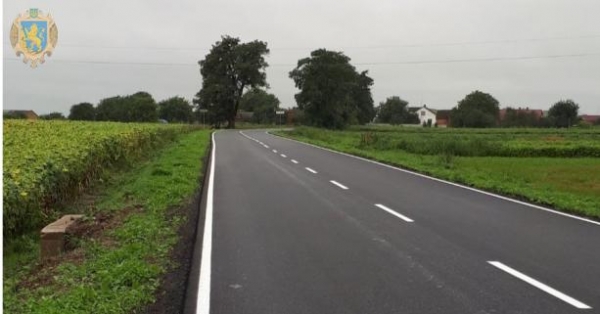
HISTORICAL TREASURES… IN THE ATTIC of the house of local historian Pavlo Bugai from the village of Komarev
Until recently, it was believed that the history of the village of Komareva in the Sokal district began in the 17th century—from the time of the first mention of the village in written sources. The presence of people here in more ancient times was not documented in the “Handbook of Archeology of Ukraine. Lviv region” (the most complete collection of archaeological monuments of the region) or “History of cities and villages of Ukraine” does not include the settlement of Komariv at all. This “white spot” – the village lies on the wonderful chernozems of Buzy, on the banks of the Bely Stik river and its old rivers (where there were old rivers), which seem to have been created for living and farming – can only be explained by the insufficiency of the archaeological research of both Maly Polissia and Sokalshchyna in particular .
But it turned out that the ancient history of Komarev is hidden only from scientists. There is a person who possesses valuable material from the ancient history of the village and its surroundings. A pleasant surprise for archaeologists was the recently shown collection of several dozen ancient products made of stone, clay, metal, and glass from the Mesolithic era (10-8 thousand years ago) to modern times. These historical treasures are placed in the attic of the house of the resident of Komarev, the tireless local historian Pavlo Bugai. The collection is arranged in the form of a small museum collection. Among its exhibits there is also a lot of ethnographic material, first of all, useful things of the 19th and 20th centuries: an ax, a hoe, dishes, lamps, coins, jewelry.
The most impressive and scientifically valuable is the collection of products made of black Volyn flint. These are axes, chisels, sickles, cutters, scrapers, knives, cores, breakers, plates of the copper-stone age, the bronze age and the early iron age (4-1 thousand BC, ware ware culture, Tshinets-Komariv and Lusatia). Individual products are perfectly preserved, as if they left the hands of the master yesterday. Impressive are the finished forms of completely polished flint axes with a black shiny surface, egg-shaped, with clear vertical faces of nuclei — cores from which plates were beaten for their further processing, small arrowheads and microliths – small sharp plates that were inserted in a row into the longitudinal groove of a wooden or bone handle of a knife, sickle or scraper.
The assortment of ancient dishes is significant. These are the fragments of pots, bowls, mugs, cubes, pans and spinning wheels formed by hand, without the use of a potter’s wheel, beautifully ornamented, mainly from the Old Russian times of the 11th-14th centuries, pots, jugs, lids. There are individual specimens of clay spinning wheels – heavier than the spindle for spinning, sinkers for fishing nets (apparently, until recently, the White Stik was a wide, full-flowing river, rich in fish), bone scrapers and awls used in leather processing. That is, the things collected here reflect the entire range of occupations of the ancient settlements of Bily Stok and Bug: farming, cattle breeding, fishing, woodworking, pottery, chinbar, spinning. A palisade made of wooden piles, driven vertically into the bottom of the floodplain of the Old White Stok, also belongs to the late Middle Ages – the basis, perhaps, of the water mill of that time.
Recently, the authors of the article, together with P. Bugai, conducted an archaeological survey in the village of Mosquitoes In the tracts “Bayurovi duby”, “Pid stavom”, “Pirova parina” a large number of fragments of dishes and fragments of flint products of different times have been collected. In some places, the ancient settlements were particularly rich in finds: obviously, there were large public or industrial premises – workshops, and perhaps also burial grounds of the ancient inhabitants of the region. It is quite likely that soon in the vicinity of the village. Stationary archaeological excavations will be conducted in Komarev. So we hope for interesting results, because the Sokal region is known for its archaeological sites of great scientific importance. Let’s recall at least the excavations of 3,000-year-old burial grounds in Ulvivk and Tjalov, research in princely Belz. And not far from Komarevo, near the village of Zubkov, a few years ago the authors of the article discovered a unique rich burial of the Lendel culture (Copper Age, more than 5 thousand years ago).
Pavel Bugai’s collection of ancient finds is significant. But even more wonder and respect is caused by his own local history activity, especially in the current times, far from the problems of research culture. Not only that, Pavlo devotes all his free time from work and housekeeping to field searches for archaeological material. He also organized fellow villagers for this. They began to notice in their fields plowed ancient finds, which before were not things from the past for them, but simply stones or bones.
Thus, during the construction of the basement, Mr. Ihor Kirichuk found and handed over to Pavlo Bugaev a miniature stucco pot (“gladushechka”) dating back 3,000 years—obviously, an imitation of the real dishes that were placed in the burial pit and accompanied the deceased to the afterlife. Mainly flint products were taken for storage by Vera Stadnyk, Yurii Humenyuk, Petro Vozniakivskyi, Ivan Prystash, and Lyubomyr Tiktor. Ten finds from my own

